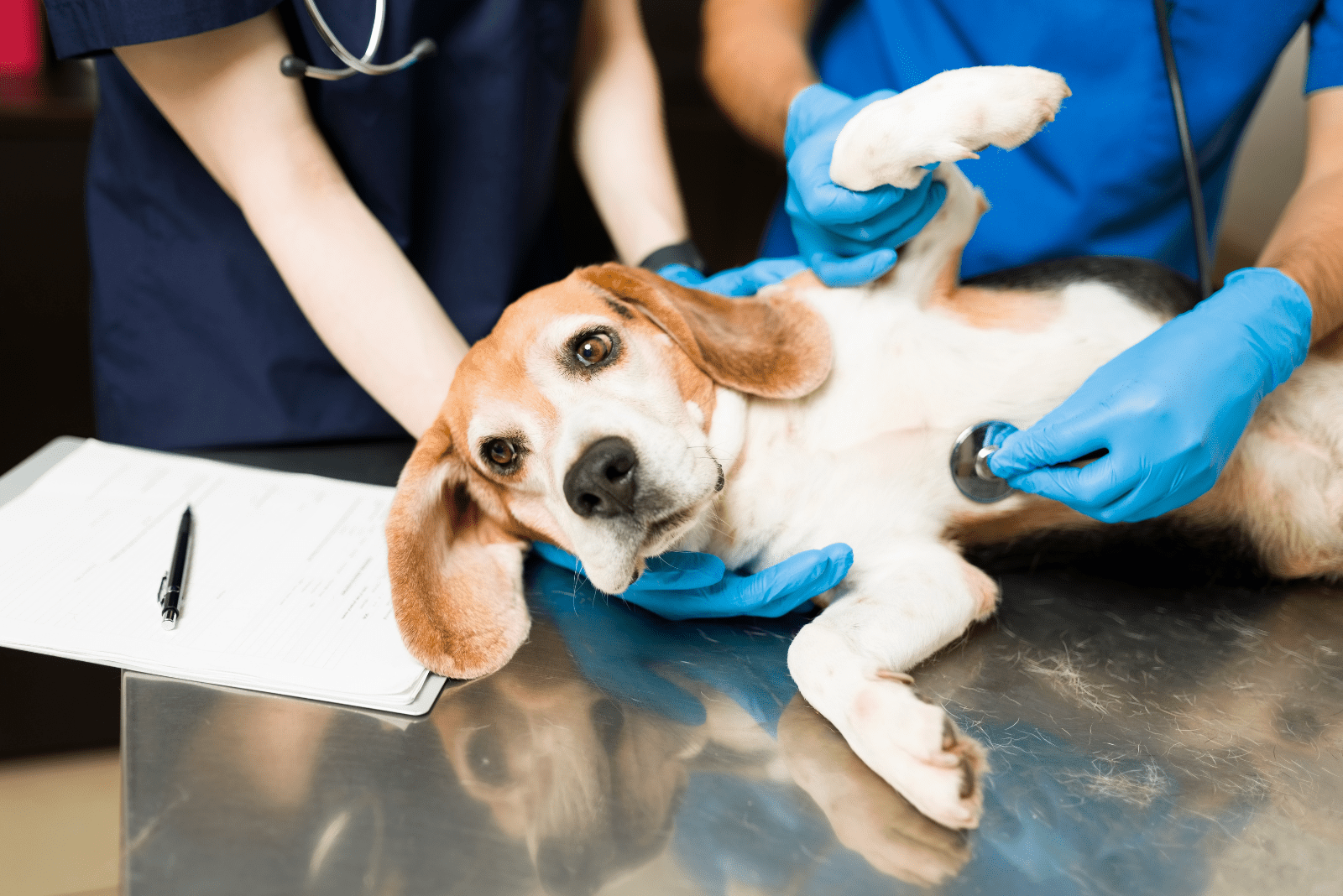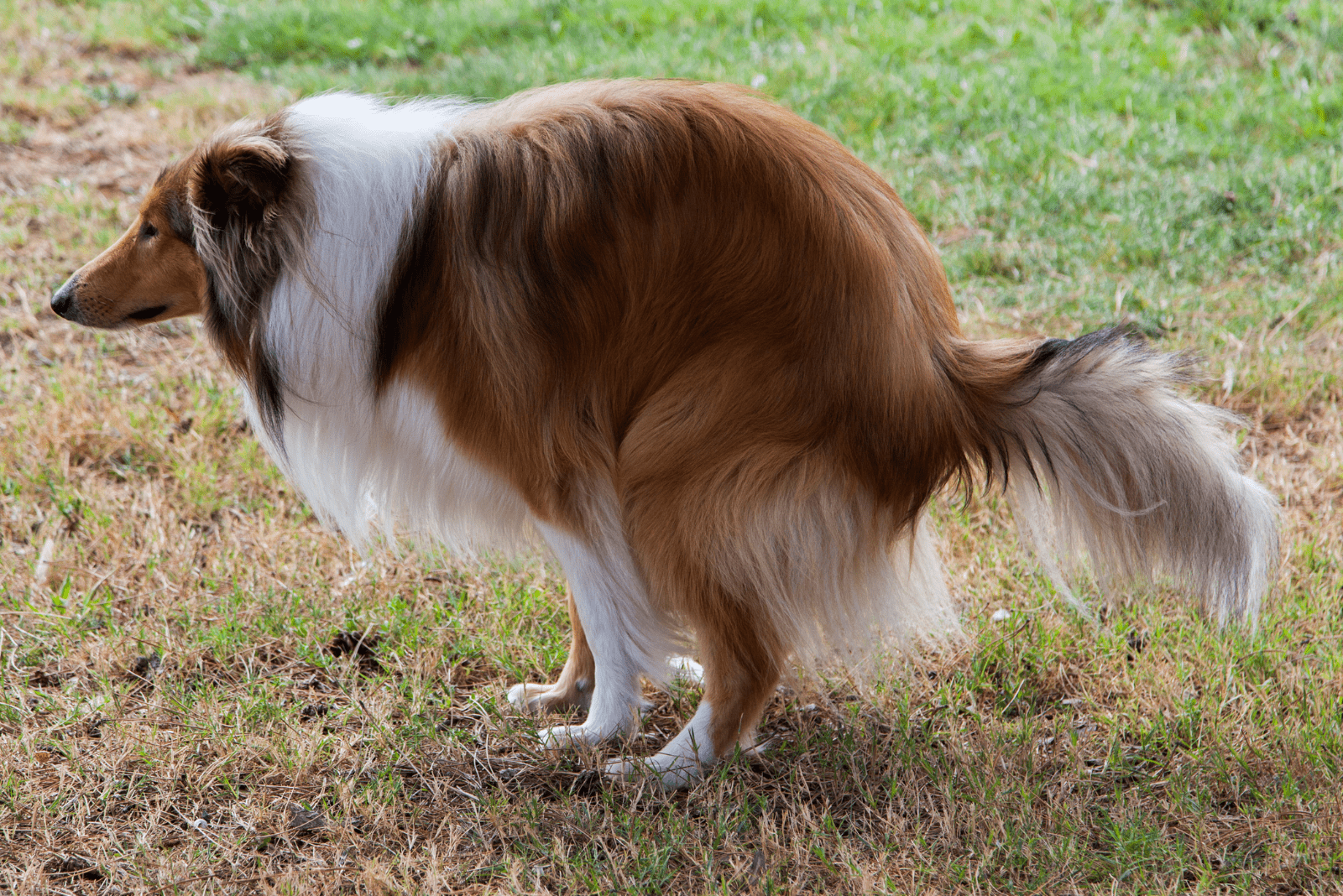If you are an owner of a dog — a female or male dog, it is your responsibility to take care of their health and do what is best for them. But sometimes there is so much information and there are so many different opinions coming from all sides that we don’t know what is right. Is it OK to spay a female dog? When should we spay a female dog? And also, how will my female dog’s behavior change after spaying?
These are all important questions, and we’ll tell you the truth about spaying, with all the benefits and possible side effects. And we will tell you the truth about behavioral changes that may happen after the spaying procedure.
How Will My Female Dog’s Behavior Change After Spaying?

If you decide to spay your female dog, you have to understand a very important fact: a dog’s personality cannot be changed, but you can try to change its behavior. This is the same for neutered dogs. It becomes quite logical when you think about the meaning behind the terms: ‘behavior’ and ‘personality’.
A Dog’s personality is something each dog is born with, and it is influenced by genes and through the process of early socialization. A complete personality change is not possible. You’d have to change the dog’s DNA code to do this, and so far, that is impossible and it would be very unethical.
Canine behavior can be adjusted, and some behavioral issues can be completely eradicated. You can adjust these behavioral problems through obedience training, especially during puppyhood. It is easier to change the behavior of young dogs than older dogs, but it is still manageable.
By spaying female dogs or neutering male dogs (castration), we can adjust or reduce certain behavior problems, but there is no quick fix. To understand what can and cannot be changed, let’s see what spaying is.
What Is Spaying?
Spaying is a surgical procedure carried out by a licensed veterinarian in a licensed animal hospital on intact female dogs (bitches). The procedure is called an Ovariohysterectomy. During this surgical procedure, all reproductive organs of a female dog are removed — uterus, ovaries, and fallopian tubes. This makes the female dog unable to reproduce (get pregnant) and it permanently ends the heat cycle.
The removal of reproductive organs causes hormonal changes in a dog’s body which can lead to behavioral changes. This procedure ( to spay/neuter) has medical benefits and plays a role in the physical health improvement of a dog.
But the question dog owners are asking is “how will my female dog’s behavior change after spaying?” Here are all the possible behavioral changes of the spayed dog.
1. Reduced Territory Marking
Dogs communicate in many ways, and one typical behavior of intact male dogs and unspayed female dogs is territory marking. They mark their territory with urine as a “message” or “warning” to other dogs that this is their territory.
Even though male dogs do this type of behavior more often than female dogs, it is normal behavior for females in heat too. A female dog that has reached sexual maturity will mark her territory before and during the heat cycle. This is a “message” scent marking that has the role of telling all available male dogs that she is in heat.
This is one of the unwanted behaviors that can occur in unneutered female dogs because not only does it attract all the males in the neighborhood, but it can also leave urine stains everywhere during the heat cycle period. And the urine of unspayed female dogs is more unpleasant, because the higher presence of hormones makes the scent more pungent.
Frequent urination is a form of undesirable behavior that can be reduced by spaying your female dog. Because the primary reason for urine marking was to let other dogs know she is in the heat, without any breeding instincts, she won’t have the desire to urinate as a form of territory marking anymore.
But… there is always a but. Female spayed dogs can still mark their territory if they find themselves in a new territory with new scents all around them. It is a way of saying hello I am here too, for dogs.
The good thing is that spaying will immensely reduce territory marking in female dogs, and neutered males as well. You won’t have to worry about your dog getting territorial by marking everything (and sometimes — everyone) anymore.
2. Reduced Irritability
Female dogs reach their sexual maturity at approximately six months of age. This varies from breed to breed, and it can be earlier for smaller dog breeds or later for larger dog breeds. But the same thing happens — a change in hormonal balance. When this change happens, some female dogs can get irritable, or they can exhibit behavioral changes.
One of the most noticeable behavioral changes during estrus (heat cycle) is irritability which manifests through anxious behavior, agitation, and excessive whining or crying — especially while playing with toys.
There isn’t much we can do to help the dog calm down during the heat cycle. We can play with her more frequently to keep her occupied or take her for long walks. But be very careful not to go near intact males. A female dog in heat will want to go to the male dogs, and her irritability can grow into aggression.
Also, if you have to go to work and you don’t want to go back home to find a mess made by an agitated unspayed female dog (including urine stains) you can either leave some toys to keep her entertained, or you can spay the dog.
The spaying procedure reduces irritability in dogs caused by the heat cycle by 100%. Because, when there is no heat cycle there is no irritation caused by the heat cycle. Your dog might be irritated after spaying, but the reason behind this behavior is something else, not estrus.
3. Reduced Roaming

Another behavioral change that happens during the heat cycle is roaming. This happens because of the need to find a male dog to mate with. This behavior is common in both female dogs and male dogs, too.
But, when you are a dog owner of a female dog, it can be a bit different when a dog returns home. You can have a surprise after two to three months. A lot of tiny, cute surprises. There are signs to tell if your dog is pregnant. But if you want to be 100% certain — the best option is to go to the vet.
Of course, let’s not forget the danger of a dog getting hit by a car or the danger of getting injured in any other way. It is unsafe for a dog, male or female, spayed or unspayed to roam the streets or fields, wherever you live.
So, if you want to make sure your dog won’t roam during the heat cycle, schedule an appointment at your local vet hospital and spay your dog. The spaying procedure will reduce roaming because the dog has no breeding instinct and has no need to go out and look for a mate.
This also means you won’t have to worry about intact males when you go on a walk with your female dog. The spayed female dog has no hormonal scent that tells other dogs she is a sexually mature female dog. In other words — they will leave her alone.
4. No Unwanted Attention
That brings us to our next point answering the question of “how will my female dog’s behavior change after spaying?” Point number four is — there will be no unwanted attention. If there is a female dog in a heat cycle in an area of 3 miles, a male dog can smell her scent and he will do everything to show up at your doorstep.
Without a rose, mind you, just with puppy eyes asking — can I come in, just for a bit? Don’t get fooled. Never leave your female dog in the same room as an intact male dog when she is in heat.
If you are a dog breeder, you should know by now that keeping your female dog in a separate room from all other male dogs is a must. Also, you should look out for possible aggressive behavior among the intact male dogs that have reached sexual maturity. But, if you do intend to breed your dogs or an accident happens , well then there are things you can expect from a female dog after mating, like behavioral changes or body changes.
The best solution so that you won’t have to defend your female dog from all the unwanted attention during the heat cycle which can last more than 2 weeks is to get your dog spayed. Without the desire to mate, your female dog won’t leave any scent for male dogs to find, and she will be “off the charts” for all intact male dogs for the rest of her life.
5. No Bleeding
Every dog, no matter the breed, goes through several phases during the heat cycle. These phases are represented by behavioral and physiological changes. Some changes during these phases are more obvious in some dogs than others, but they all have it. Bleeding during the heat cycle is one of the changes. This bleeding has nothing to do with menstruation in humans, but the opposite, it means that the female dog is fertile when the bleeding occurs.
When a dog is spayed, there is no bleeding. Why is that? High amounts of estrogen in a female dog’s blood system lead to other physiological changes, one of which is a bleeding discharge from the vulva. The estrogen is made by the ovaries which are removed together with the other reproductive organs during the spaying surgery. If there are no ovaries — there is no estrogen. So, there is nothing in your dog’s body to induce the physiological changes that lead to the bleeding.
If you want to be sure you won’t have to put dog nappies on your female dog during the heat cycle, clean the carpet, or have to explain the uncomfortable situation of a female dog humping your friend’s leg, spaying is the best option.
6. Aggression
This is a topic for debate. In general, people think that spaying will make your dog calmer, no matter if it’s a male dog or a female dog. In fact, this can be true, and it can be the total opposite.
In most cases, a dog without hormonal changes during the heat cycle and without any breeding inclinations will exhibit less aggressive behavior. There will be no need to fight for dominance among other intact male and female dogs, no need for territory marking, and no aggression caused by frustration. When we say frustration, we mean frustration caused by being unable to go out and roam to find a suitable or available mate.
A female dog in a pack that seeks male attention during her estrus is more aggressive towards other female dogs. That is normal behavior of intact females because they instinctively do their best to mate with the best possible candidate that will ensure she has successful offspring.
So, if you spay your dog, there will be no aggressive behavior. Once again, in most cases. A study done by Deborah L. Duffy, Ph.D., and James A. Serpell, Ph.D. (Non-reproductive Effects of Spaying and Neutering on Behavior in Dogs) from the University of Pennsylvania had different conclusions. Their test results showed that aggression is increased in spayed female dogs. Some other sources have the same conclusion.
But these studies have to be done on a larger scale and tested by several recognized Veterinary Associations across the globe to be taken as a 100% proven fact. Until then, we still have a majority of cases where female dogs are less aggressive after the spaying procedure.
Behavioral Changes In The First 24 Hours After The Spaying Procedure

So far, we have seen obvious signs of a female dog’s behavior change after spaying. The changes we have listed happen a few weeks to a month after spaying and are permanent. But there are some behavioral changes that happen in the first 24 hours after the surgery. These changes are not permanent, but it’s important to know what to look out for in order to keep our dogs safe after the spaying procedure.
Spaying is a surgical procedure that is always done under general anesthesia. That means your dog is unconscious and it can’t feel any pain or other sensations. But, after the effect of the anesthesia wears off, the dog starts to exhibit the first signs of post-operational behavioral changes.
What can we expect:
• the dog will be sleepy
• the dog can be vocal (whining, crying)
• the dog can be anxious
• the dog will be dazed
• the dog won’t have a proper appetite (first 48 hours)
• the dog will have decreased energy
• the dog might vomit
All of these changes are the after-effects of general anesthesia. They are not permanent and will go away within 24 – 48 hours. If they persist, you should contact your veterinarian. It is important to know about these behavioral changes so that we know what to expect. A dazed and sleepy dog can easily hurt itself after the surgery.
We have to make sure they are comfortable, on the ground where they can’t fall off the chair or bed in their attempt to get up. Remember, their reflexes are still off, and it takes time for them to regain full control of their muscles. Also, a dog right after spaying (or any other surgery that requires general anesthesia) cannot control their bladder right away, so you will have to prepare towels just in case.
Besides behavioral changes, some physiological problems can occur, including the infection of the spay incision. These are all possible risks that can happen after the surgery, so the best thing to do is to get informed before the spaying procedure.
Health Benefits Of Spaying

Spaying your female dog can have numerous benefits for her health. It reduces the risk of some diseases, infections, and stress. Indirectly, spaying reduces the accident incidence rate which can be high during the heat cycle when a female roams in search of a mate. Dog health can be improved by spaying procedures, and we are going to talk about those health benefits.
1. Reduced Risk Of Cancer
Cancer called mammary or breast cancer most commonly occurs in unspayed female dogs. When a female dog is spayed before she has her first estrus (the heat cycle) the risk of having mammary cancer is immensely reduced.
It’s not too late if we take our dog for a spaying procedure after her first heat cycle, either. The risk is still reduced even after the second heat cycle too. It is not as reduced as it would be if we spayed the dog before the heat, but it is still a good option.
Ovariohysterectomy (spaying) eliminates the risk of other tumors connected to the reproductive organs in female dogs — the uterus and ovaries. Of course, when it comes to mammary cancer the risk is still high if we decide to spay a dog after a couple of years, but it is still a better option than leaving the female intact.
Sometimes a vet will recommend spaying a female dog after the first heat cycle. But this is rare and it is connected to the dog breed and individual dog health problems. We should do it according to our vet’s opinion.
2. Eliminates Risk Of Pyometra
Pyometra is a bacterial infection caused by E. coli in most cases. It affects the uterus (womb) of a dog and the first symptoms usually occur a few weeks after the end of the heat cycle. Pyometra is a very dangerous disease that often leads to death if not treated on time. The only solution is the removal of the womb or hysterectomy.
The first signs of Pyometra in dogs are not specific to this disease only and can mean many things. But if you notice some of these signs:
• lethargy
• loss of appetite
• vomiting
• diarrhea
• pale gums
• vaginal discharge
Take your dog to a vet. It might not be Pyometra, but something is definitely wrong because these are signs of an infection or disease in dogs.
Spaying your dog eliminates the risk of Pyometra. The equation is simple — no uterus, no uterine infection. This is yet another reason why spaying your female dog has a health benefit for your dog.
3. Reduced Stress Risk
There is no rule as to what can happen during your dog’s pregnancy. There are signs and physiological changes that we can expect, yes — but diseases, stress on the female dog, and possible injuries are the parts we cannot predict.
These are dogs we are talking about. They have high breeding instincts and high mothering instincts that they will follow and obey to the fullest. We can try and teach them what to do and where to go, but they will still follow the years and years of genetically induced behavior and do what they think is the best to protect their offspring.
And this can all be very stressful for a female dog, not to mention possible health problems during and after the birthing procedure. All things considered, if we are not planning on breeding our dogs and we don’t want new puppies, the best solution to reduce the risk of stress and reduce the possibility of weird seemingly unexplained behavior, is to spay your female dog.
Possible Side Effects Of Spaying

As with everything else in the world, there are positive and negative parts to everything. There are benefits to spaying your dog, but there are downsides or side effects, as well. The side effects include health issues that may occur after the spaying procedure. Some of them are easily treatable while others might be a bit of a hassle.
The most common side effects of spaying are:
• Increased Risk Of Urinary Infections
• Possible Urinary Incontinence
• Risk Of Obesity
The risk of obesity is something that shouldn’t be a problem if we control the food intake of our spayed dog. We can also control the food quality and make sure we give high-protein and low-carbohydrate types of food to all of our dogs, not only those that have been spayed/neutered.
Also, we can control the weight of our dogs by giving them more opportunities to exercise and play. You can always consult your veterinarian about the food your spayed female dog should eat or about the appropriate weight a dog should be.
Other Spaying Options
There are not a lot of options when it comes to spaying a dog. The most common procedure is the complete removal of all reproductive organs — uterus, ovaries, and fallopian tubes. This surgical procedure is done under general anesthesia and after it’s done, a female dog cannot produce the estrogen hormone anymore. There are two other possible spaying options for female dogs.
1. Ovariectomy
This surgical procedure includes the removal of both ovaries. Because the ovaries produce estrogen, the dog’s body will stop producing the estrogen hormone, just like in a total ovariohysterectomy. The uterus is left in the body, but because there are no ovaries there is no breeding instinct and no possibility for a dog to get pregnant.
The reason for an ovariectomy is that it requires a smaller incision, so causes less trauma to the body which leads to a reduced risk of possible complications during and after the procedure. Of course, this procedure can be done only on female dogs that have a healthy uterus.
2. Hysterectomy
A hysterectomy is a surgical procedure in which only the uterus and parts of the fallopian tubes are removed. The ovaries are still functional, and they continue to produce the estrogen hormone. This spaying procedure ensures the dog has all the benefits (or downsides) of an active estrogen hormone in its body.
That means that the female dog’s behavior change after spaying does not occur. A female dog with functioning ovaries that produce estrogen may still have a breeding instinct and associated behavior. But the dog cannot get pregnant — it has no uterus.
The Conclusion
You’ve heard the truth and now have the answer to the question: “how will my female dog’s behavior change after spaying?” We’ve covered all options, and looked at the topic from both sides. The reason behind spaying can vary depending on the owner’s personal opinion or depending on a dog’s health.
If you are still unsure about whether to spay your dog or not, you can always ask a question or two to your vet to make sure you are making the right decision. But in general, if you are not planning on breeding your dog, the better option would be to spay your female dog. She will benefit from it both mentally and physically. But, the final choice is on you.
All dog owners want what is best for their dogs, so I am sure you will make the best possible option for your female dog when it comes to spaying, too.
Read Next: My Dog Jumped After Being Spayed, So I Did These 4 Things
